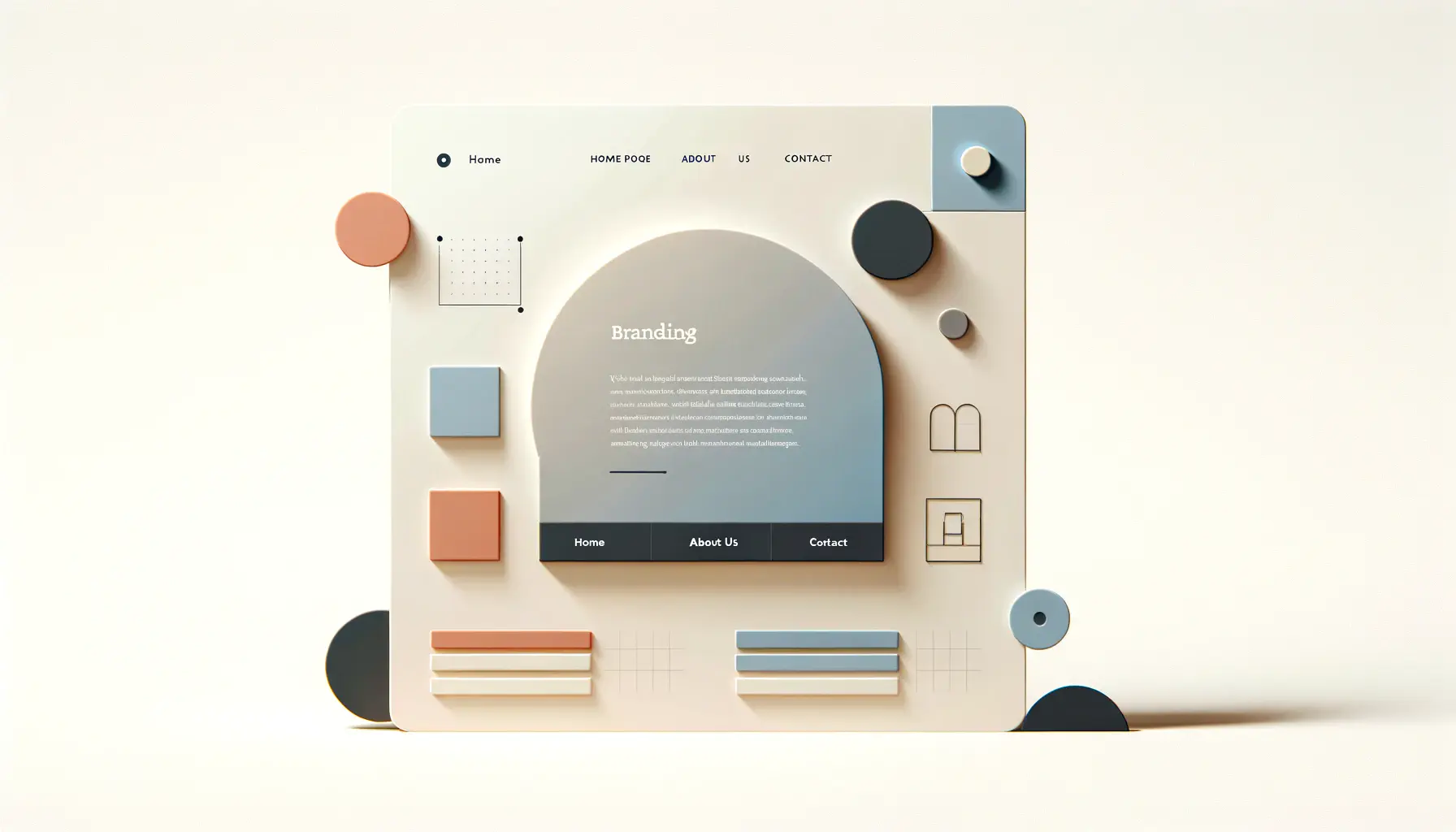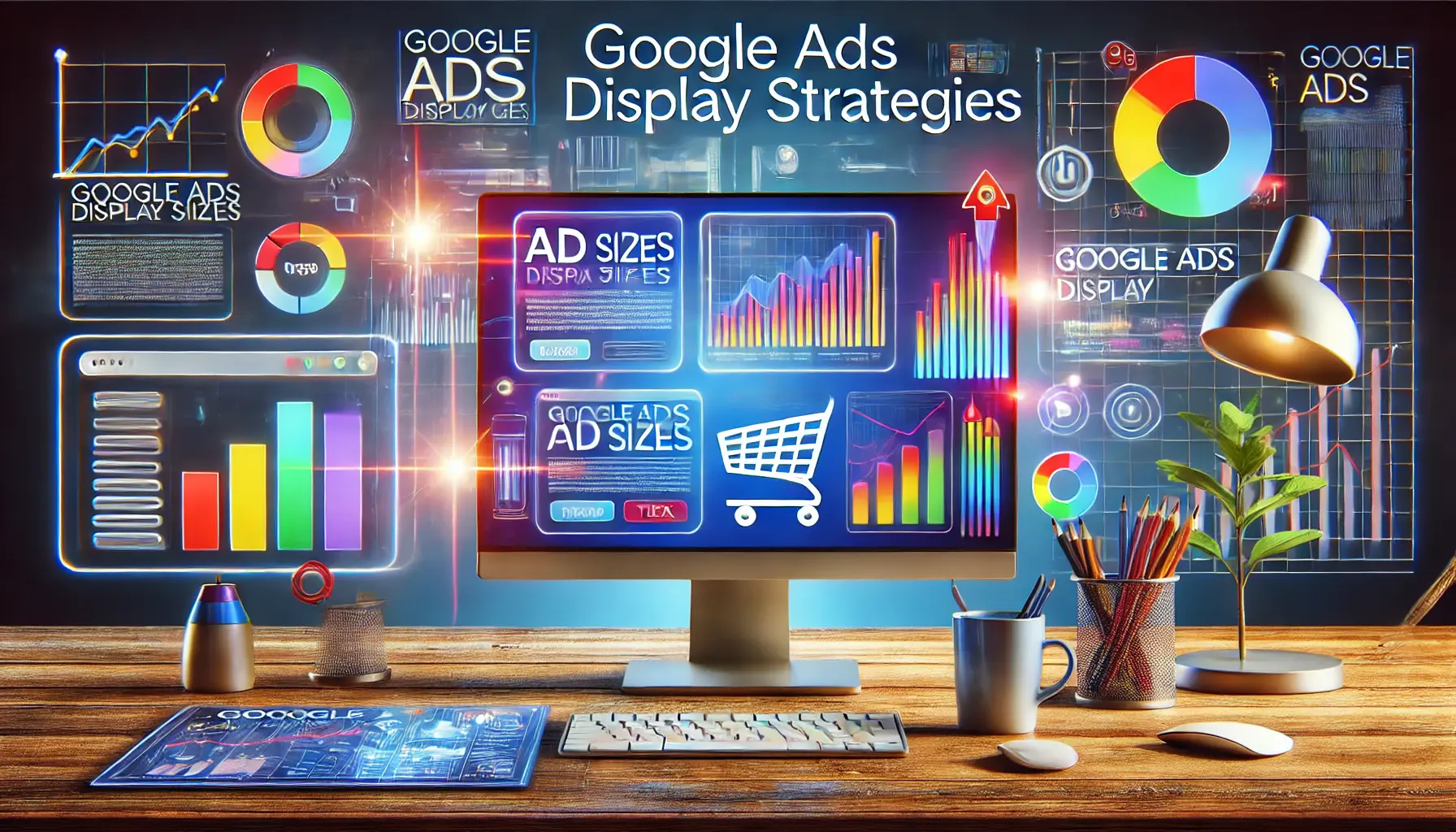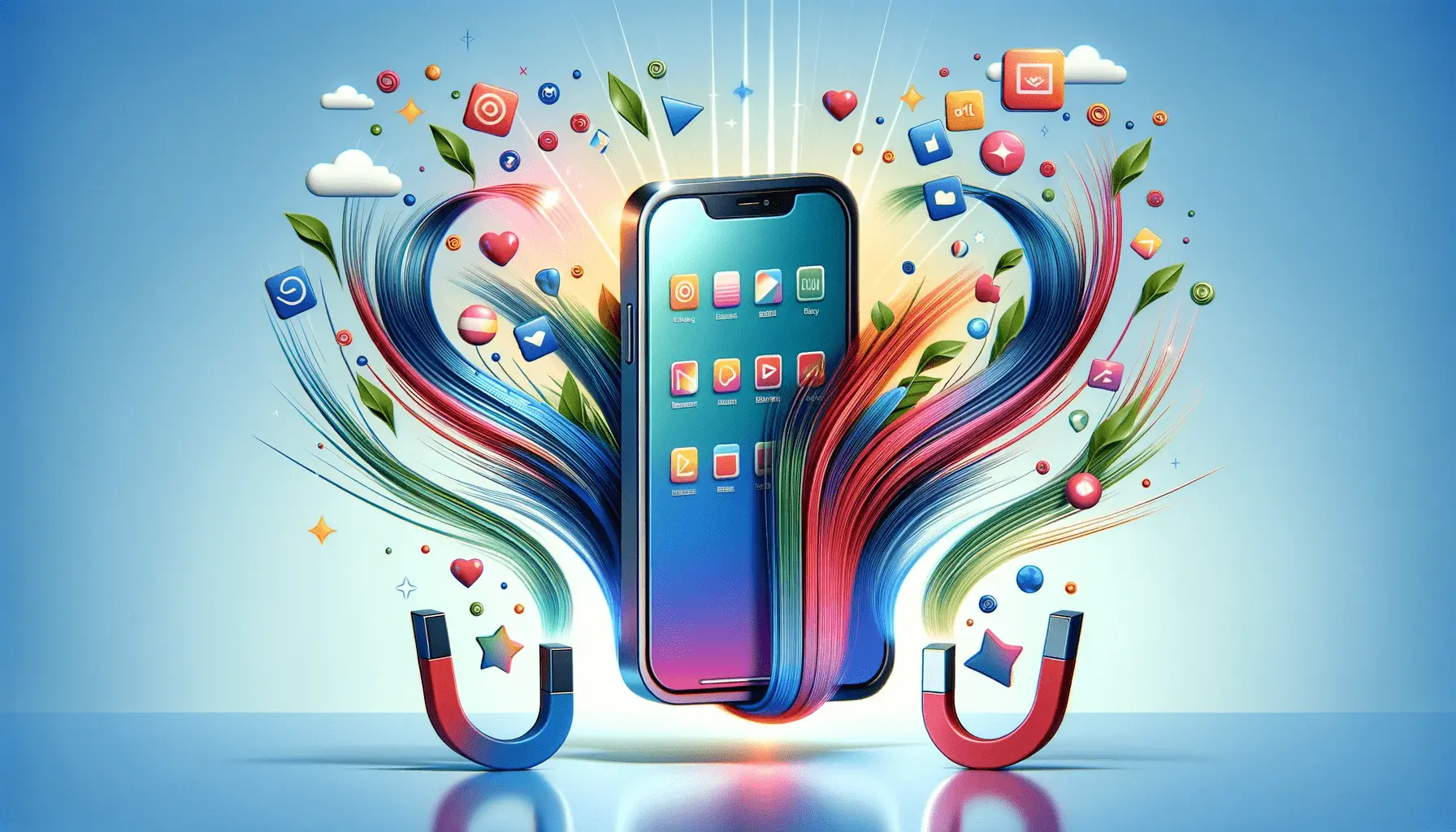In today’s digital age, the importance of designing for accessibility cannot be overstated.
Accessibility, in the context of digital design, refers to the creation of products, services, and environments that are easily usable by as wide an audience as possible, including those with disabilities.
This concept is not just a matter of legal compliance or social responsibility; it’s a crucial component of effective branding.
A brand that prioritizes accessibility demonstrates empathy, inclusivity, and a commitment to providing equal experiences for all users, which can significantly enhance its reputation and reach.
From a branding perspective, accessibility should be viewed not as an afterthought but as a key factor in the design process.
It’s about understanding the diverse needs of your audience and ensuring that everyone, regardless of their physical or cognitive abilities, can interact with your brand seamlessly.
This approach not only broadens your market but also fosters a deeper connection with your audience by showing that you value their experience and are committed to removing barriers to access.
- Understanding Accessibility in Branding
- Strategies for Implementing Accessibility in Brand Design
- Benefits of Accessible Branding for Business Growth
- Incorporating Accessibility into Brand Identity
- Challenges and Solutions in Accessible Branding
- Future Trends in Accessible Branding
- Best Practices for Accessible Content Creation
- Embracing Accessibility: A Pathway to Inclusive Branding
- FAQs on Designing for Accessibility in Branding
Understanding Accessibility in Branding
At its core, accessibility in branding is about inclusivity.
It’s about making sure that your brand’s digital presence—from websites and mobile apps to social media content—is designed in a way that accommodates everyone, including people with disabilities such as vision impairment, hearing loss, and motor difficulties.
This involves implementing design choices that enhance usability for everyone, such as sufficient color contrast, clear and legible typography, and navigable layouts that can be used with screen readers and other assistive technologies.
But why is this important for your brand?
Firstly, it expands your reach.
With millions of people worldwide living with some form of disability, designing for accessibility opens up your brand to a wider audience.
Secondly, it improves user experience across the board.
Features that make a website accessible, such as simple navigation and readable fonts, also make it more user-friendly for all visitors.
This can lead to increased customer satisfaction and loyalty, which are invaluable for any brand.
Key Components of Accessible Design
Accessible design encompasses a range of elements, all aimed at enhancing the user experience for individuals with disabilities.
These include visual considerations like color contrast and typography, auditory elements such as captioning for videos, and navigational aspects that ensure a website can be easily used with a keyboard or voice commands.
By integrating these components into your brand’s digital assets, you create an environment where all users, regardless of their abilities, can engage with your content effectively.
Another critical aspect of accessible design is adaptability.
This means creating flexible designs that can be customized to meet individual needs.
For example, allowing users to adjust text sizes or choose high-contrast color schemes can significantly improve the usability of your digital platforms for people with vision impairments.
This adaptability not only enhances accessibility but also demonstrates your brand’s commitment to providing a personalized and inclusive user experience.
Incorporating accessibility into your branding strategy is not just about meeting legal requirements; it’s a powerful way to demonstrate your brand’s values of inclusivity and empathy, thereby strengthening your connection with a diverse audience.
Strategies for Implementing Accessibility in Brand Design
Implementing accessibility into your brand design is a strategic process that requires thoughtful planning and execution.
It’s about more than just ticking boxes; it’s about genuinely understanding and catering to the needs of all users.
Here are some effective strategies to ensure your brand design is accessible and inclusive:
Conducting Accessibility Audits
One of the first steps in enhancing accessibility is to understand where you currently stand.
Conducting an accessibility audit of your digital assets can help identify areas that need improvement.
This involves reviewing your websites, apps, and other digital content against established accessibility standards, such as the Web Content Accessibility Guidelines (WCAG).
By pinpointing specific issues, you can create a targeted plan to address them.
Accessibility audits should be conducted regularly as part of your ongoing brand maintenance.
This ensures that new content or updates to your digital platforms continue to meet accessibility standards, keeping your brand inclusive for all users.
Implementing User-Centered Design
User-centered design is a framework that places the needs, preferences, and behaviors of users at the forefront of the design process.
This approach is particularly effective for creating accessible brand designs, as it encourages designers to consider the diverse ways people interact with digital content.
Key aspects include:
- Engaging with users with disabilities during the design process to gain direct insights into their experiences and needs.
- Creating personas that represent a wide range of users, including those with various disabilities, to guide design decisions.
- Testing designs with real users to ensure they are intuitive and accessible for everyone.
By adopting a user-centered design approach, brands can create more empathetic and effective designs that resonate with a broad audience.
Training and Awareness
Building a culture of accessibility within your organization is crucial for sustainable inclusive design.
This involves training your design, development, and content teams on accessibility principles and best practices.
Awareness sessions can help team members understand the importance of accessibility and how they can contribute to creating more inclusive brand experiences.
Regular training ensures that all team members are up-to-date with the latest accessibility standards and techniques, fostering a collective commitment to inclusivity.
Incorporating accessibility into your brand’s design is not just a one-time effort but a continuous commitment to inclusivity and empathy. By regularly auditing your digital assets, engaging in user-centered design practices, and fostering awareness within your team, you can ensure that your brand remains accessible and appealing to all users.
Benefits of Accessible Branding for Business Growth
Integrating accessibility into your brand’s design strategy offers a multitude of benefits that extend beyond compliance and social responsibility.
Accessible branding can significantly contribute to business growth by enhancing user experience, expanding market reach, and building a positive brand reputation.
Let’s explore these benefits in detail:
Enhanced User Experience
Accessible design prioritizes clear navigation, readability, and intuitive interfaces, which collectively improve the overall user experience.
When users find your digital platforms easy to use, they are more likely to stay longer, explore more content, and engage with your brand.
This increased engagement can lead to higher conversion rates, whether that means more newsletter sign-ups, increased sales, or other desired actions.
Moreover, by accommodating users’ diverse needs, accessible branding ensures that all customers have a positive interaction with your brand, which is essential for building long-term customer loyalty.
Expanded Market Reach
Designing for accessibility opens your brand to a wider audience, including the millions of people worldwide who live with disabilities.
By ensuring your digital content is accessible, you’re not only complying with legal standards but also tapping into a significant market segment that is often overlooked.
This can lead to increased brand visibility and a broader customer base.
- Approximately 15% of the world’s population experiences some form of disability.
- Accessible websites are more likely to be ranked higher by search engines, improving SEO and attracting more traffic.
Expanding your market reach through accessible design not only drives business growth but also demonstrates your brand’s commitment to inclusivity and equality.
Positive Brand Reputation
Brands that prioritize accessibility are often viewed as socially responsible, empathetic, and innovative.
This positive perception can enhance your brand’s reputation, making it more attractive to consumers, investors, and potential employees.
In today’s socially conscious market, a strong reputation for inclusivity can be a significant competitive advantage.
Furthermore, by actively promoting your commitment to accessibility, you can inspire other businesses to follow suit, contributing to a more inclusive digital landscape for everyone.
Accessible branding is not just a moral imperative but a strategic business decision that can lead to enhanced user experience, expanded market reach, and a positive brand reputation. By embracing accessibility, brands can unlock new opportunities for growth and differentiation in a competitive marketplace.
Incorporating Accessibility into Brand Identity
Creating a brand identity that resonates with a wide audience requires a deep understanding of accessibility principles.
This goes beyond digital platforms to encompass every aspect of your brand’s presence, from logos and color schemes to marketing materials and packaging.
Here’s how to weave accessibility into the very fabric of your brand identity:
Designing an Accessible Logo and Color Scheme
Your brand’s logo and color scheme are often the first points of interaction with your audience.
Ensuring these elements are accessible is crucial.
For logos, this means creating designs that are recognizable and distinguishable even in grayscale or for those with color vision deficiencies.
Utilizing simple, high-contrast color combinations can enhance visibility and recognition.
When selecting a color scheme for your brand, consider the color contrast between background and text to ensure readability.
Tools like the WebAIM Contrast Checker can help you evaluate and adjust your color choices to meet accessibility standards.
Remember, an accessible brand identity is not only inclusive but also stands out in the crowded marketplace.
Accessible Marketing Materials
Marketing materials, whether digital or print, are vital tools for communicating your brand’s message.
To make these materials accessible, start by using clear, legible fonts and sufficient spacing between lines and paragraphs.
When including images or infographics, provide alternative text descriptions for those who use screen readers.
For video content, captions and audio descriptions can make your messages accessible to individuals with hearing or visual impairments.
By designing marketing materials with accessibility in mind, you ensure that your brand’s message reaches and resonates with a broader audience, including those with disabilities.
Product Packaging and Accessibility
Product packaging is another critical component of your brand identity that can benefit from an accessibility-focused approach.
Consider the ease of opening and handling for people with limited dexterity or strength.
Clear, easy-to-read labels with high contrast and tactile elements can also make a significant difference for consumers with visual impairments.
Innovative brands are exploring QR codes on packaging that, when scanned, lead to digital content describing the product in detail, offering an inclusive experience for all consumers.
Incorporating accessibility into your brand identity is a comprehensive process that touches every aspect of your brand’s interaction with the world. From logos and color schemes to marketing materials and packaging, an accessible brand identity not only broadens your audience but also deepens your brand’s connection with consumers by demonstrating empathy and inclusivity.
Challenges and Solutions in Accessible Branding
While the benefits of accessible branding are clear, implementing these practices can present challenges for businesses.
Recognizing these challenges is the first step towards finding effective solutions that ensure your brand remains inclusive and accessible to all.
Here are some common obstacles and strategies to overcome them:
Understanding Accessibility Standards
The landscape of accessibility standards, such as the Web Content Accessibility Guidelines (WCAG), can be complex and ever-evolving.
This complexity can be daunting for brands looking to enhance their accessibility.
- Solution: Invest in training for your design and development teams to keep them informed about the latest accessibility standards and best practices. Regular workshops and seminars can help demystify these guidelines and make them more approachable.
Integrating Accessibility into Existing Brand Identities
For established brands, retrofitting accessibility into existing brand identities and digital assets can seem like a monumental task.
This is particularly challenging when trying to maintain brand consistency across all platforms.
- Solution: Start small by prioritizing the most critical aspects of your digital presence, such as your website’s homepage or key landing pages. Gradually expand your efforts to include other areas of your digital ecosystem. Consider consulting with accessibility experts to guide this process effectively.
Cost Implications
Improving accessibility can require significant investment, particularly for small to medium-sized enterprises (SMEs) with limited budgets.
The cost of redesigning digital assets and training staff can be a barrier.
- Solution: Focus on cost-effective changes that have a significant impact on accessibility. Many improvements, such as adjusting color contrasts or adding alt text to images, can be implemented with minimal expense. Additionally, leveraging free resources and tools available online can help reduce costs.
Maintaining Accessibility Over Time
Ensuring ongoing compliance with accessibility standards as your brand evolves and as new content is added can be challenging.
Accessibility needs to be a continuous consideration, not a one-time effort.
- Solution: Establish accessibility guidelines for your brand and incorporate accessibility checks into your regular content creation and website maintenance routines. Automated tools can help monitor your website for accessibility issues, but manual testing by individuals with disabilities is also crucial for uncovering usability challenges.
Overcoming the challenges of integrating accessibility into your branding requires a strategic approach, focusing on education, starting with small changes, leveraging cost-effective solutions, and committing to ongoing maintenance. By addressing these challenges head-on, brands can ensure they remain inclusive and accessible to all.
Future Trends in Accessible Branding
The landscape of accessible branding is continuously evolving, driven by technological advancements, regulatory changes, and a growing recognition of the importance of inclusivity.
As we look to the future, several trends are set to shape the way brands approach accessibility, ensuring that digital experiences are more inclusive and engaging for all users.
Advancements in Assistive Technologies
Assistive technologies, such as screen readers, voice recognition software, and braille displays, are crucial for making digital content accessible.
Future advancements in these technologies will offer even more sophisticated ways for individuals with disabilities to interact with digital content.
Brands that stay abreast of these advancements and design their digital assets to be compatible with a wide range of assistive technologies will be better positioned to serve a diverse audience.
- Increased integration of AI and machine learning to personalize assistive technologies based on individual user needs.
- Development of more intuitive and seamless interfaces for assistive devices, enhancing user experience.
Regulatory Changes and Global Standards
As awareness of the importance of digital accessibility grows, we can expect to see more stringent regulatory requirements around the world.
Brands will need to navigate these changes by ensuring their digital content complies with a complex web of global accessibility standards.
Staying informed and proactive in adapting to these regulations will be key to avoiding legal pitfalls and demonstrating a commitment to inclusivity.
- Harmonization of global accessibility standards, making it easier for international brands to ensure compliance across different markets.
- Increased enforcement of accessibility regulations, with potential penalties for non-compliance, highlighting the importance of proactive accessibility efforts.
Inclusive Design as a Brand Differentiator
In the competitive digital landscape, brands are constantly seeking ways to differentiate themselves.
Inclusive design offers a powerful opportunity to stand out by demonstrating a brand’s commitment to social responsibility and empathy for all users.
As consumers become more socially conscious, brands that prioritize accessibility and inclusivity in their design and messaging will resonate more deeply with their audience.
- Brands leveraging their commitment to accessibility as a key part of their marketing and brand storytelling.
- Increased consumer loyalty and advocacy for brands that are perceived as inclusive and socially responsible.
The future of accessible branding is bright, with technological innovations, regulatory developments, and a shift towards inclusivity driving change. By embracing these trends, brands can not only ensure compliance and avoid legal risks but also enhance user experience, expand their audience, and differentiate themselves in a crowded market.
Best Practices for Accessible Content Creation
Creating content that is accessible to all users, including those with disabilities, is a critical aspect of inclusive branding.
As digital platforms become increasingly central to our daily lives, ensuring that everyone can access and benefit from online content is not just a legal requirement but a moral imperative.
Here are some best practices for creating accessible content that resonates with a diverse audience.
Use Descriptive and Meaningful Link Text
Instead of generic phrases like “click here,” use descriptive link text that provides context and explains where the link will take the user.
This practice aids users who rely on screen readers by giving them a clear understanding of the link’s destination, enhancing the navigability of your content.
- Correct: “Learn more about our accessibility initiatives.”
- Incorrect: “To learn more about our accessibility initiatives, click here.”
Ensure Text Readability
Maintaining a high level of readability is crucial for accessible content.
This means choosing fonts that are easy to read, using adequate font sizes, and ensuring high contrast between text and background colors.
Additionally, breaking up text into shorter paragraphs, using bullet points, and incorporating subheadings can help users with cognitive disabilities to better understand and retain the information.
- Avoid large blocks of text by using bullet points or numbered lists to break down information.
- Use headings and subheadings to organize content logically.
Provide Alternatives for Multimedia
For multimedia content such as images, videos, and audio clips, providing text alternatives is essential for users who cannot see or hear your content.
Alt text for images, transcripts for audio, and captions for videos are all effective ways to ensure your multimedia content is accessible to everyone.
- Every image should have alt text that describes the image’s content or function.
- Videos should include captions for the hearing impaired and audio descriptions for the visually impaired.
Design for Keyboard Navigation
Many users with mobility impairments rely on keyboard navigation instead of a mouse.
Ensure your website or digital platform is fully navigable using keyboard shortcuts, including the ability to access all links, buttons, and interactive features.
- Test your website’s keyboard navigability by attempting to access all content using only the tab, enter, and arrow keys.
Creating accessible content is an ongoing process that requires attention to detail, a deep understanding of your audience’s needs, and a commitment to inclusivity. By following these best practices, brands can ensure their digital content is welcoming and accessible to all users, reflecting a brand ethos that values diversity and inclusion.
Embracing Accessibility: A Pathway to Inclusive Branding
As we’ve navigated through the multifaceted landscape of designing for accessibility from a branding perspective, it’s clear that accessibility is not just a feature—it’s a fundamental aspect of modern brand identity.
In an era where digital presence is synonymous with a brand’s image, ensuring that your brand is accessible to all is not just about compliance; it’s about connecting with your audience on a deeper level.
Accessibility in branding is a testament to a brand’s commitment to inclusivity, empathy, and social responsibility.
The Cornerstone of Future Branding
Looking ahead, the trajectory of accessible branding is set to redefine how brands interact with their audience.
With advancements in technology and a growing emphasis on social equity, accessible branding is moving from the periphery to the center stage of marketing strategies.
It’s becoming clear that brands that fail to incorporate accessibility into their identity risk not only alienating a significant portion of their audience but also falling behind in a progressively competitive market.
Key Takeaways for Brands
- Accessibility should be integrated into the DNA of your brand, influencing every decision from web design to content creation.
- Understanding and implementing accessibility standards like WCAG can significantly enhance user experience and broaden your brand’s reach.
- Engaging with users with disabilities and incorporating their feedback into your design process can lead to more innovative and user-friendly solutions.
- Regular audits and updates are essential to maintain and improve accessibility as technology and user needs evolve.
Final Thoughts
In conclusion, designing for accessibility is a journey that offers profound benefits for both brands and their audiences.
It’s a journey of learning, adaptation, and above all, understanding the diverse needs of the people you serve.
By embracing accessibility, brands not only ensure compliance with legal standards but also demonstrate a genuine commitment to creating a world where everyone has equal access to information, services, and experiences.
As we look to the future, accessible branding stands as a beacon of inclusivity, innovation, and empathy—a true reflection of a brand’s values and its dedication to serving all members of the community.
Quality web design is key for a great website! Check out our service page to partner with an expert web design agency.
FAQs on Designing for Accessibility in Branding
Explore common questions about integrating accessibility into your brand’s design strategy to ensure an inclusive experience for all users.
Accessible design in branding ensures that brand experiences are usable by people with a wide range of abilities, enhancing inclusivity and user engagement.
Accessibility broadens your audience, improves user satisfaction, and demonstrates a brand’s commitment to inclusivity and social responsibility.
Brands can enhance digital content accessibility by using legible fonts, ensuring high color contrast, and providing alt text for images and captions for videos.
Key components include readable text, easy navigation, sufficient color contrast, and compatibility with assistive technologies like screen readers.
Yes, accessible design can improve SEO by enhancing site usability, increasing engagement, and ensuring content is easily interpreted by search engines.
Accessible branding significantly improves user experience by ensuring all users can interact seamlessly with a brand, fostering loyalty and satisfaction.
Typography in accessible branding ensures text is easily readable for everyone, including those with visual impairments, by using clear fonts and adequate spacing.
Brands should conduct accessibility audits regularly to identify and address new issues as digital content evolves, ensuring ongoing compliance and inclusivity.













